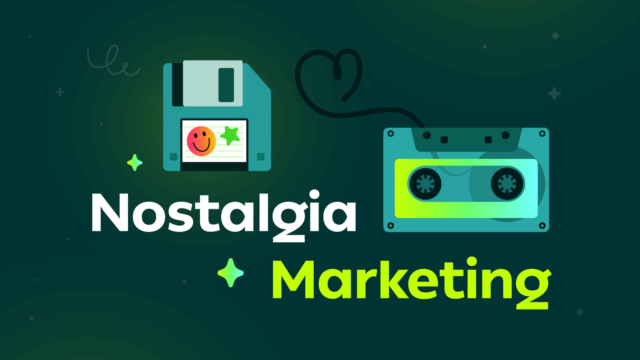In the fast-paced world of marketing, where trends come and go in the blink of an eye, one powerful emotion has stood the test of time: nostalgia. Nostalgia is a complex emotional experience, often described as a sentimental longing for the past. It can evoke feelings of warmth, comfort, and happiness, making it a compelling tool in marketing campaigns. Brands increasingly harness nostalgia to connect with consumers on a deeper level, foster loyalty, and create memorable experiences. In this blog, we’ll explore the role of nostalgia in marketing campaigns and how brands can effectively leverage this powerful emotion.

Table of Contents
Toggle1. Understanding Nostalgia
Nostalgia is not merely a fond memory; it’s a powerful psychological phenomenon that can influence behavior and decision-making. When people feel nostalgic, they often recall specific memories tied to significant life events, relationships, or experiences. This emotional connection can evoke positive feelings and reinforce brand loyalty, making nostalgia an effective strategy for marketers.
2. Creating Emotional Connections
Nostalgia helps create emotional connections between brands and consumers. By tapping into shared memories or cultural touchstones, brands can evoke feelings of comfort and familiarity, making consumers more receptive to their messages. This emotional resonance can lead to increased engagement, brand preference, and even advocacy.
Example:
Brands like Coca-Cola often incorporate nostalgic elements into their campaigns, reminding consumers of joyful moments spent with friends and family over a classic beverage.
3. Targeting Specific Demographics
Nostalgia can be particularly effective when targeting specific demographics. Different age groups have distinct nostalgic references based on their experiences. For instance, brands can appeal to Baby Boomers by referencing cultural icons from the 1960s or 1970s, while Millennials might respond more positively to elements from the late 1990s and early 2000s. Understanding the nostalgic references that resonate with each demographic allows brands to tailor their messaging effectively.
Example:
A toy company might release a line of retro toys that evoke childhood memories for parents, creating a sense of nostalgia while encouraging them to buy for their children.
4. Reinforcing Brand Identity
Incorporating nostalgia into marketing campaigns can reinforce a brand’s identity and values. Brands that have a long history can leverage their heritage to create a sense of authenticity and trust. Nostalgia can also help differentiate a brand in a crowded marketplace, making it stand out by connecting emotionally with consumers.
Example:
Levi’s has successfully used nostalgia in its campaigns by showcasing its classic denim styles that have transcended generations, appealing to both older and younger consumers.
5. Utilizing Nostalgic Imagery and Language
Visuals and language play a crucial role in evoking nostalgia. Using retro designs, vintage colors, and classic typography can instantly transport consumers back to a specific era. Additionally, incorporating language that resonates with nostalgic memories, such as referencing popular songs, movies, or cultural events, can strengthen the emotional connection.
Example:
Pepsi’s “Pepsi Generation” campaign not only highlighted the brand’s history but also included iconic imagery and slogans from past decades, appealing to consumers’ memories of enjoying Pepsi during significant life moments.
6. Storytelling Through Nostalgia
Nostalgia is often most impactful when woven into a compelling narrative. Brands can tell stories that revolve around nostalgia, drawing consumers into a shared experience. This storytelling approach can create a sense of belonging and community, encouraging consumers to engage with the brand on a deeper level.
Example:
John Lewis, a British department store, is known for its heartwarming holiday commercials that often evoke nostalgia through storytelling, featuring themes of love, friendship, and family during the festive season.
7. Encouraging User-Generated Content
Nostalgia can also be harnessed through user-generated content (UGC). Brands can encourage consumers to share their own nostalgic stories and memories related to the brand or its products. This not only fosters community engagement but also provides authentic content that resonates with other consumers.
Example:
A food brand might run a campaign asking customers to share their favorite family recipes using the brand’s products, tapping into cherished memories of cooking with loved ones.
8. Cautions in Using Nostalgia
While nostalgia can be a powerful marketing tool, it’s essential to approach it with care. Misusing nostalgia can lead to perceptions of inauthenticity or manipulation. Brands should ensure that their nostalgic references are genuine and resonate authentically with their audience. Over-reliance on nostalgia may also alienate younger consumers who do not share the same memories.
Conclusion
Nostalgia holds immense power in marketing, enabling brands to forge emotional connections and create memorable experiences for consumers. By understanding the nuances of nostalgia, targeting specific demographics, and employing storytelling techniques, brands can leverage this powerful emotion to enhance engagement and loyalty. When used thoughtfully, nostalgia can become a timeless strategy that transcends generations, allowing brands to resonate with their audience in profound ways. As consumers continue to seek authentic connections in a fast-paced digital world, nostalgia will remain a vital tool in the marketer’s toolkit.


No responses yet